- Learning time
- 30 minutes
- First play time
- 90 minutes
Mangrovia
Designed by: Eilif Svensson
Mangrovia is a race of sorts – although there’s no finish line, the game will end when someone has built all of their huts and although that’s no guarantee of a win, it doesn’t hurt. Within these parameters are a series of mini-races – to grab the best spots on the board…
The theme of Mangrovia is murky at best but building the aforementioned huts is your primary goal. The swampy board is broken up into a grid, and as well as certain spots scoring you points when a hut is constructed there, most of them also contribute to area-majority scoring at the end of the game – most huts in a column, most huts in a row. There’s also two distinct square areas: one forms its own most-huts majority scoring, the other scores a slightly oddball all huts present multiplied by your huts present.
So as you’ve probably guessed, you want to build huts. How you build them is by playing cards – there are two types; landscape cards, and valuables cards. To build a hut you must discard a landscape card matching the landscape you’re building on, and valuables cards that match the number value printed there. Basically, not hugely unlike the smash hit track-laying game, it’s a matter of getting cards, and paying them to build. How cards are gotten, and buildings built, brings us to the ritual sites. Panic not, the ritual sites is just a fancy name for the actions you’re choosing during a given round: a wooden boat sails along the ritual track, stopping on any occupied site and activating it. The activations allow you to get more cards, build huts, and collect amulets.
The amulets have two potential uses. They can be simply cashed in for points at the end of the game, or they can be cashed in to build huts on a particularly juicy spot on the board. And you can escalate how many amulets you pick up by building huts in specific spots that push you up an amulet track: the further you go up the track, the more amulets you’ll potentially collect.
The guru's verdict
-
Take That!
Take That!
For a game of simple hut-building, you might expect players to be making each other cups of tea. But with the jostling for spots, taking of cards, and the limited options to build, it's a little feistier than you might anticipate.
-
Fidget Factor!
Fidget Factor!
Low to moderate.
-
Brain Burn!
Brain Burn!
Nothing overwhelming - often your choices are to some degree dictated by circumstance. When it's not, the juggle is what helps you/what hinders others/do you want to sacrifice an action to grab the first player marker?
-
Again Again!
Again Again!
Plenty of variety in play here.

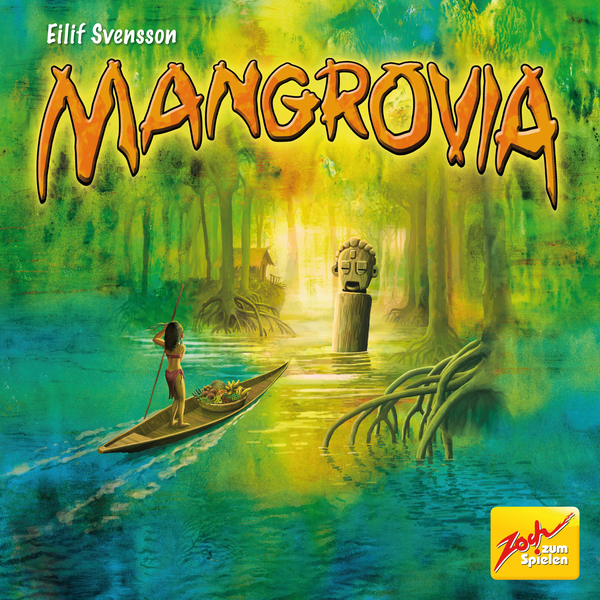
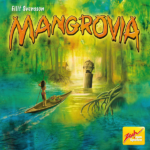
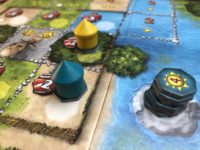
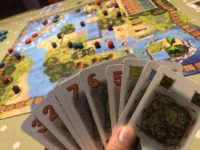
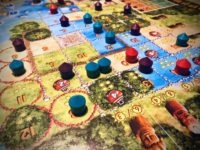
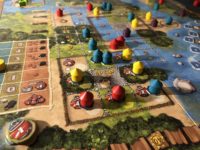


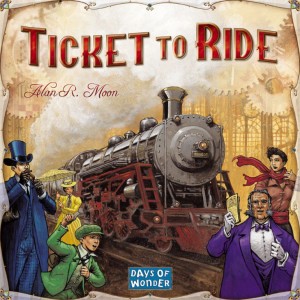



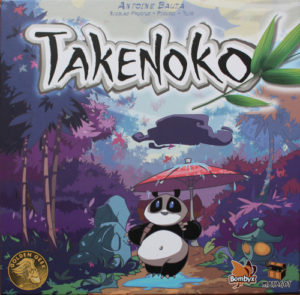

Sam says
Your brain my have shut down at 'ritual sites' but really, although Mangrovia is essentially an abstract game, it's far simpler than the explanation suggests. I've played it with someone who stared at the board in horror before we began, but was up to speed after ten minutes and really enjoyed the next hour or so. I'm not sure the theming or the box art does it any favours, but really it's a great family game with room for strategy (focus on amulets? focus on the short-term rewards? focus on ending the game ASAP and hope no-one catches you?) with the round by round tactics. Starting player is key as it gives you first choice on the ritual sites and lets you choose which two of the four landscape types may be legally built on in the next round. That lends Mangrovia a faintly dastardly air; an element of passive-aggressive combat as you watch what cards everyone is picking up and try to stymie their progress. Good game!